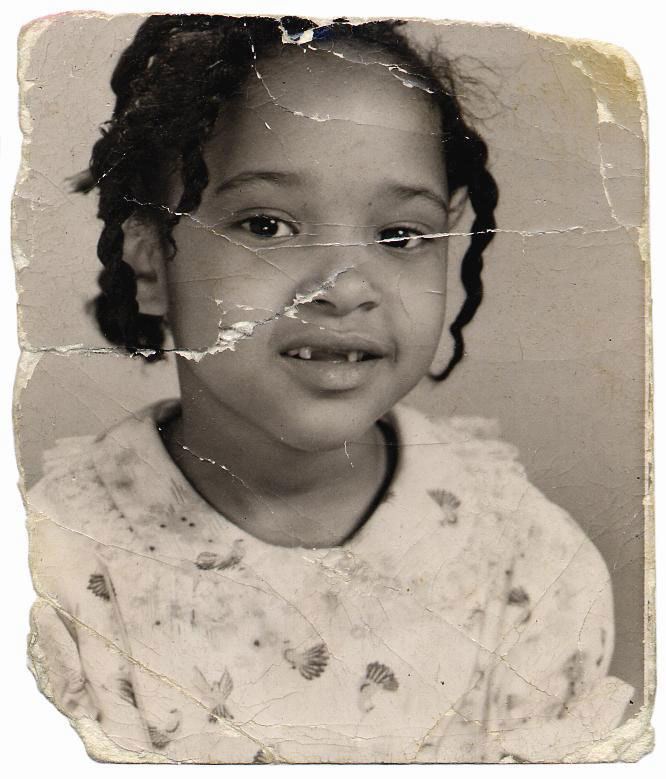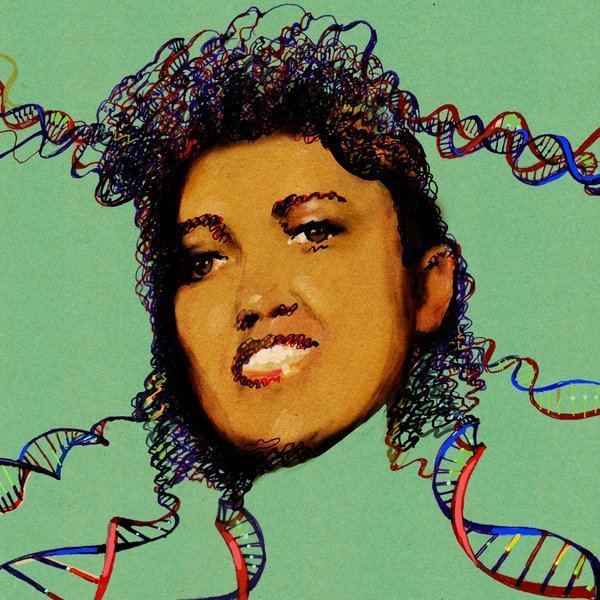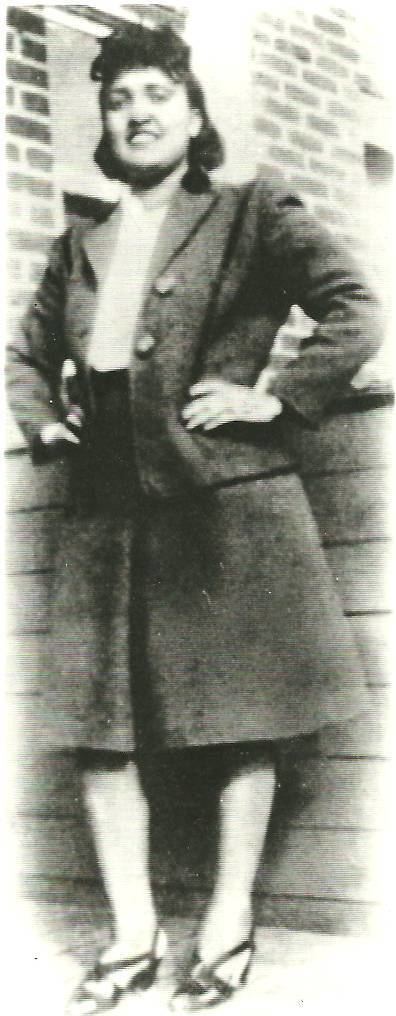Height 5 ft 2 in (1.57 m) | Name Henrietta Lacks | |
 | ||
Full Name Loretta Pleasant Died October 4, 1951, Balti, Maryland, United States Spouse David Lacks (m. 1941–1951) Children David Lacks, Jr., Deborah Lacks, Elsie Lacks, Joseph Lacks, Lawrence Lacks Siblings Gladys Pleasant Lacks, Lillian Pleasant Parents John Randall Pleasant, Eliza Lacks Pleasant Similar People | ||
Henrietta lacks bio video
Henrietta Lacks (born Loretta Pleasant; August 1, 1920 – October 4, 1951) was an African American woman whose cancer cells were the source of the HeLa cell line, the first immortalized cell line and one of the most important cell lines in medical research. An immortalized cell line will reproduce indefinitely under specific conditions, and the HeLa cell line continues to be a source of invaluable medical data to the present day.
Contents
- Henrietta lacks bio video
- Ap bio per 4 henrietta lacks
- Personal life
- Diagnosis and treatment
- Death and burial
- Medical and scientific research
- Consent issues and privacy concerns
- Recognition
- In popular culture
- References

Lacks was the unwitting source of these cells from a tumor biopsied during treatment for cervical cancer at Johns Hopkins Hospital in Baltimore, Maryland, U.S. in 1951. These cells were then cultured by George Otto Gey who created the cell line known as HeLa, which is still used for medical research. As was then the practice, no consent was obtained to culture her cells, nor were she or her family compensated for their extraction or use.

Henrietta grew up in rural Virginia. After giving birth to two of their children, she married her cousin David "Day" Lacks. In 1941 the young family moved to Turner Station in Baltimore County, Maryland so Day could work in Bethlehem Steel at Sparrows Point. After Henrietta had given birth to their fifth child she was diagnosed with cancer. Tissue samples from her tumors were taken without consent during treatment and these samples were then subsequently cultured into the HeLa cell line.

Even though some information about the origins of HeLa's immortalized cell lines was known to researchers after 1970, the Lacks family was not made aware of the line's existence until 1975. With knowledge of the cell line's genetic provenance becoming public, its use for medical research and for commercial purposes continues to raise concerns about privacy and patients' rights.

Ap bio per 4 henrietta lacks
Personal life
Henrietta Lacks was born Loretta Pleasant on August 1, 1920, in Roanoke, Virginia, to Eliza and Johnny Pleasant. Her family is uncertain how her name changed from Loretta to Henrietta, but she was nicknamed Hennie. When Lacks was four years old in 1924, her mother died giving birth to her tenth child. Unable to care for the children alone after his wife's death, Lacks' father moved the family to Clover, Virginia, where the children were distributed among relatives. Lacks ended up with her grandfather, Tommy Lacks, in a two-story log cabin that was once the slave quarters on the plantation that had been owned by Henrietta's white great-grandfather and great-uncle. She shared a room with her nine-year-old cousin and future husband, David "Day" Lacks (1915–2002).
Like most members of her family living in Clover, Lacks worked as a tobacco farmer starting from an early age. In 1935, when Lacks was 14 years old, she gave birth to a son, Lawrence Lacks. In 1939, her daughter Elsie Lacks (1939–1955) was born. Both children were fathered by Day Lacks. Elsie Lacks had developmental disabilities and was described by the family as "different" or "deaf and dumb".
On April 10, 1941, Day and Henrietta Lacks were married in Halifax County, Virginia. Later that year, their cousin, Fred Garrett, convinced the couple to leave the tobacco farm in Virginia and move to Maryland where Day Lacks could work at Bethlehem Steel in Sparrow's Point. Not long after they moved to Maryland, Garrett was called to fight in World War II. With the savings gifted to him by Garrett, Day Lacks was able to purchase a house at 713 New Pittsburgh Avenue in Turner Station. Now part of Dundalk, Maryland, Turner Station was one of the oldest and largest African American communities in Baltimore County at that time.
Living in Maryland, Henrietta and Day Lacks had three more children, David "Sonny" Lacks, Jr. (b. 1947), Deborah Lacks Pullum (born Deborah Lacks; 1949–2009), and Joseph Lacks (1950). Lacks gave birth to her last child at the Johns Hopkins Hospital in Baltimore in November 1950, four and a half months before she was diagnosed with cervical cancer. Around the same time, Elsie Lacks was placed in the Hospital for the Negro Insane, later renamed Crownsville Hospital Center, where she died in 1955.
Diagnosis and treatment
On January 29, 1951, Lacks went to Johns Hopkins, the only hospital in the area that treated black patients, because she felt a "knot" in her womb. She had previously told her cousins about the "knot" and they assumed correctly that she was pregnant. But after giving birth, Lacks had a severe hemorrhage. Her primary care doctor tested her for syphilis, which came back negative, and referred her back to Johns Hopkins. There, her doctor, Howard W. Jones, took a biopsy of the mass on Lacks's cervix for laboratory testing. Soon after, Lacks was told that she had a malignant epidermoid carcinoma of the cervix. In 1970, physicians discovered that she had been misdiagnosed and actually had an adenocarcinoma. This was a common mistake at the time and the treatment would not have differed.
Lacks was treated with radium tube inserts as an inpatient and discharged a few days later with instructions to return for X-ray treatments as a follow-up. During her treatments, two samples were taken from Lacks's cervix without her permission or knowledge; one sample was of healthy tissue and the other was cancerous. These samples were given to George Otto Gey, a physician and cancer researcher at Johns Hopkins. The cells from the cancerous sample eventually became known as the HeLa immortal cell line, a commonly used cell line in contemporary biomedical research.
Death and burial
On August 8, 1951, Lacks, who was 31 years old, went to Johns Hopkins for a routine treatment session and asked to be admitted due to continued severe abdominal pain. She received blood transfusions and remained at the hospital until her death on October 4, 1951. A partial autopsy showed that the cancer had metastasized throughout her entire body.
Lacks was buried in an unmarked grave in the family cemetery in a place called Lackstown in Halifax County, Virginia. Lackstown is the name that was given to the land in Clover, Virginia that was originally owned by white, land- and slave-owning members of the Lacks family before the Civil War. Later generations gave the land to the many black members of the Lacks family who were descendants of African slaves and their white owners.
Lacks' exact burial location is unknown, but the family believes that it is within a few feet of her mother's grave site, which for decades was the only one in the family to have been marked with a tombstone. In 2010, Roland Pattillo, a faculty member of the Morehouse School of Medicine who had worked with George Gey and knew the Lacks family, donated a headstone for Lacks. This prompted her family to raise money for a headstone for Elsie Lacks as well, which was dedicated on the same day. The headstone of Henrietta Lacks is shaped like a book and contains an epitaph written by her grandchildren that reads:
Medical and scientific research
George Otto Gey, the first researcher to study Lacks's cancerous cells, observed that her cells were unique in that they reproduced at a very high rate and could be kept alive long enough to allow more in-depth examination. Until then, cells cultured for laboratory studies only survived for a few days at most, which wasn't long enough to perform a variety of different tests on the same sample. Lacks's cells were the first to be observed that could be divided multiple times without dying, which is why they became known as "immortal." After Lacks' death, Gey had Mary Kubicek, his lab assistant, take further HeLa samples while Henrietta's body was at Johns Hopkins' autopsy facility. The roller-tube technique was the method used to culture the cells obtained from the samples that Kubicek collected. Gey was able to start a cell line from Lacks's sample by isolating one specific cell and repeatedly dividing it, meaning that the same cell could then be used for conducting many experiments. They became known as HeLa cells, because Gey's standard method for labeling samples was to use the first two letters of the patient's first and last names.
The ability to rapidly reproduce HeLa cells in a laboratory setting has led to many important breakthroughs in biomedical research. For example, by 1954, Jonas Salk was using HeLa cells in his research to develop the polio vaccine. To test his new vaccine, the cells were mass-produced in the first-ever cell production factory. Additionally, Chester M. Southam, a leading virologist, injected HeLa cells into cancer patients, prison inmates, and healthy individuals in order to observe if cancer could be transmitted as well as to examine if one could become immune to cancer by developing an acquired immune response.
HeLa cells were in high demand and put into mass production. They were mailed to scientists around the globe for "research into cancer, AIDS, the effects of radiation and toxic substances, gene mapping, and countless other scientific pursuits". HeLa cells were the first human cells successfully cloned in 1955, and have since been used to test human sensitivity to tape, glue, cosmetics, and many other products. Since the 1950s, scientists have grown 20 tons of her cells, and there are almost 11,000 patents involving HeLa cells.
In the early 1970s, a large portion of HeLa cells became contaminated by other cell cultures. As a result, members of Henrietta Lacks's family received solicitations for blood samples from researchers hoping to learn about the family's genetics in order to replace the contaminated cells.
Alarmed and confused, several family members began questioning why they were receiving so many telephone calls requesting blood samples. In 1975, the family also learned through a chance dinner-party conversation that material originating in Henrietta Lacks was continuing to be used for medical research. The family had never discussed Henrietta's illness and death among themselves in the intervening years but with the increased curiosity about their mother and her genetics they now began to ask questions.
Consent issues and privacy concerns
Neither Henrietta Lacks nor her family gave her physicians permission to harvest her cells. At that time, permission was neither required nor customarily sought. The cells were used in medical research and for commercial purposes. In the 1980s, family medical records were published without family consent. A similar issue was brought up in the Supreme Court of California case of Moore v. Regents of the University of California in 1990. The court ruled that a person's discarded tissue and cells are not their property and can be commercialized.
In March 2013, researchers published the DNA sequence of the genome of a strain of HeLa cells. The Lacks family discovered this when the author Rebecca Skloot informed them. There were objections from the Lacks family about the genetic information that was available for public access. Jeri Lacks Whye, a grandchild of Henrietta Lacks, said to The New York Times, "the biggest concern was privacy - what information was actually going to be out there about our grandmother, and what information they can obtain from her sequencing that will tell them about her children and grandchildren and going down the line". That same year another group working on a different HeLa cell line's genome under NIH funding submitted it for publication. In August 2013, an agreement was announced between the family and the National Institutes of Health that gave the family some control over access to the cells' DNA sequence found in the two studies along with a promise of acknowledgement in scientific papers. In addition, two family members will join the six-member committee which will regulate access to the sequence data.
Recognition
In 1996, Morehouse School of Medicine held its first annual HeLa Women's Health Conference. Led by physician Roland Pattillo, the conference is held to give recognition to Henrietta Lacks, her cell line, and "the valuable contribution made by African Americans to medical research and clinical practice". The mayor of Atlanta declared the date of the first conference, October 11, 1996, "Henrietta Lacks Day".
Lacks's contributions continue to be celebrated at yearly events in Turner Station. At one such event in 1997, then-U.S. Congressman from Maryland, Robert Ehrlich, presented a congressional resolution recognizing Lacks and her contributions to medical science and research.
In 2010, the Johns Hopkins Institute for Clinical and Translational Research established the annual Henrietta Lacks Memorial Lecture Series to honor Henrietta Lacks and the global impact of HeLa cells on medicine and research.
In 2011, Morgan State University in Baltimore granted Lacks a posthumous honorary doctorate in public service. Also in 2011, the Evergreen School District in Vancouver, Washington named their new high school focused on medical careers the Henrietta Lacks Health and Bioscience High School, becoming the first organization to publicly memorialize her by naming a school in her honor.
In 2014, Lacks was inducted into the Maryland Women's Hall of Fame. In 2017, a minor planet in the main asteroid belt was named "359426 Lacks" in her honor.
In popular culture
The HeLa cell line's connection to Henrietta Lacks was first brought to popular attention in March 1976 with a pair of articles in the Detroit Free Press and Rolling Stone written by reporter Michael Rogers. In 1998, Adam Curtis directed a BBC documentary about Henrietta Lacks called The Way of All Flesh.
Rebecca Skloot documented extensive histories of both the HeLa cell line and the Lacks family in two articles published in 2000 and 2001 and in her 2010 book The Immortal Life of Henrietta Lacks.
HBO announced in 2010 that Oprah Winfrey and Alan Ball were developing a film project based on Skloot's book, and in 2016 filming commenced. with Winfrey in the leading role of Deborah Lacks, Henrietta's daughter. NBC's Law & Order aired its own fictionalized version of Lacks's story in the 2010 episode "Immortal," which Slate referred to as "shockingly close to the true story" and the musical groups Jello Biafra and the Guantanamo School of Medicine and Yeasayer both released songs about Henrietta Lacks and her legacy. The film The Immortal Life of Henrietta Lacks was released in 2017.
Members of the Lacks family authored their own stories for the first time in 2013 when Lacks's oldest son and his wife, Lawrence and Bobbette Lacks, wrote a short digital memoir called "Hela Family Stories: Lawrence and Bobbette" with first-hand accounts of their memories of Henrietta Lacks while she was alive and of their own efforts to keep the youngest children out of unsafe living environments following their mother's death.
The HeLa Project, a multimedia exhibition to honor Lacks, opened in 2017 in Baltimore at the Reginald F. Lewis Museum of Maryland African American History & Culture. It included a portrait by Kadir Nelson and a poem by Saul Williams.
